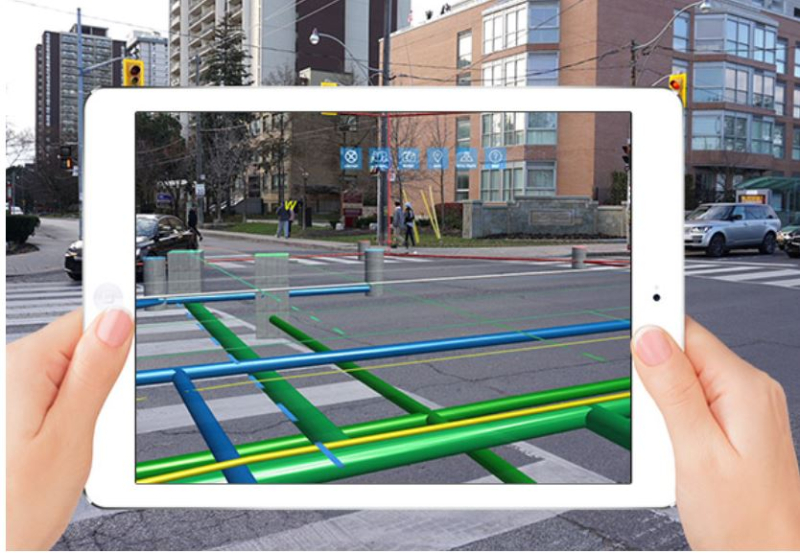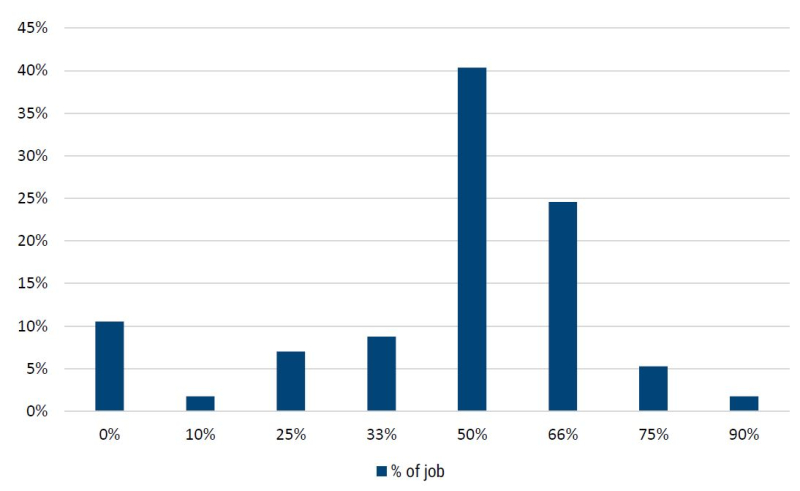Introduction
In the bustling world of urban infrastructure, where the labyrinth of underground utilities lays hidden beneath our feet, the process of locating these vital lifelines is a task of paramount importance.
With technological advancements continually reshaping industries, the integration of augmented reality (AR) into the domain of underground utility locates has emerged as a game-changer, promising enhanced productivity, accuracy, and safety.
A recent study delves deep into the tangible benefits of employing AR in this critical sector, shedding light on its transformative potential.
The Shift Towards Augmented Reality
Traditionally, the task of locating underground utilities has been reliant on a myriad of tools and maps, often marred by inefficiencies stemming from incomplete or outdated data and challenging environmental conditions.
However, the advent of AR applications like vGIS is heralding a new era, seamlessly integrating 2D and 3D data onto consumer handheld devices to offer survey-grade accuracy in real-time.
Despite initial hesitations, the tide is turning as the industry embraces the promise of AR technology.
Quantifying the Benefits
To gauge the practical advantages of AR in underground utility locates, a pioneering study conducted by Promark-Telecon, in collaboration with vGIS, undertook a meticulous assessment in the bustling metropolis of Toronto.
Over the course of several months, locators utilized AR technology to perform a variety of tasks, meticulously recording data on time savings, safety enhancements, and overall job satisfaction.
Quantifying the Benefits
To gauge the practical advantages of AR in underground utility locates, a pioneering study conducted by Promark-Telecon, in collaboration with vGIS, undertook a meticulous assessment in the bustling metropolis of Toronto.
Over the course of several months, locators utilized AR technology to perform a variety of tasks, meticulously recording data on time savings, safety enhancements, and overall job satisfaction.
Time Savings: A Game-Changer
The findings of the study revealed a striking reduction in job duration, with time savings ranging from negligible to a staggering four hours.
On average, AR technology slashed job completion times by an impressive 50%, translating into substantial gains in productivity for utility locators.
Notably, the study underscored the pivotal role of accurate utility records in amplifying the benefits of AR visualization, emphasizing the symbiotic relationship between technology and data quality.
Safety and Ease of Work
Amidst the complexities of underground utility locates, safety remains paramount. Encouragingly, AR showcased a commendable safety record, with 85% of participants reporting no adverse impact.
Moreover, the ease of performing tasks received resounding acclaim, with 84% of locators affirming that AR significantly facilitated their workflow, underscoring its intuitive usability and practicality in real-world scenarios.
Looking Ahead: A Bright Future
As the findings of the study illuminate the transformative potential of AR in underground utility locates, they also point towards a future brimming with possibilities.
With cumulative time savings of 12–20 hours per locator per month, the economic implications are profound, offering a compelling case for widespread adoption across the industry.
Moreover, the study serves as a testament to the resilience of AR technology, navigating challenges seamlessly while ushering in a new era of efficiency and effectiveness.
Conclusion
In conclusion, the study underscores the pivotal role of augmented reality in revolutionizing underground utility locates, offering a compelling blend of productivity, safety, and ease of use.
As the industry embraces this transformative technology, the path ahead is paved with promise, heralding a future where the invisible becomes visible, and the mundane task of utility locates evolves into a seamless, data-driven endeavor.
With each passing day, augmented reality asserts its position as a catalyst for change, reshaping industries and unlocking untapped potential beneath the surface.


